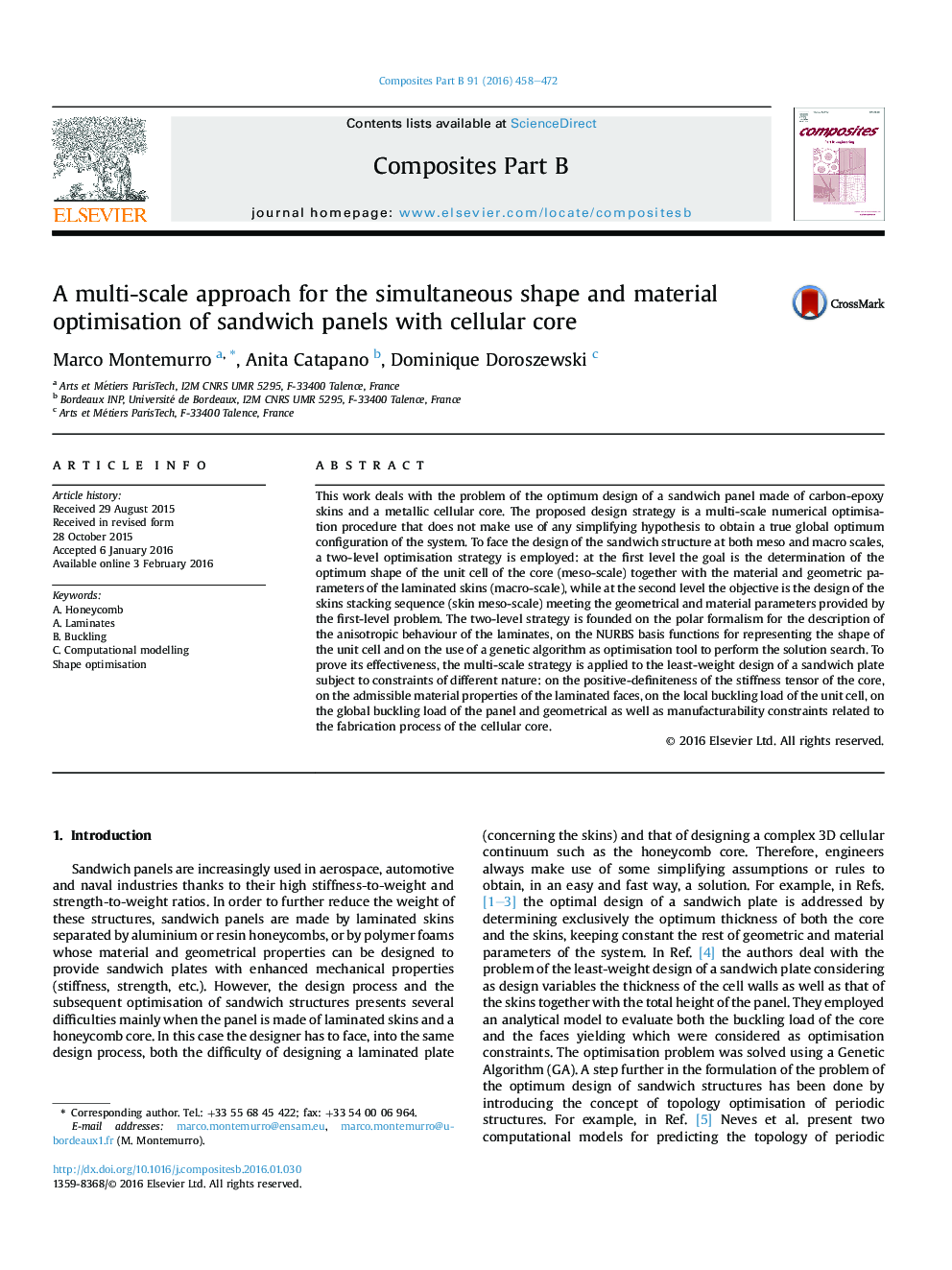| Article ID | Journal | Published Year | Pages | File Type |
|---|---|---|---|---|
| 7212811 | Composites Part B: Engineering | 2016 | 15 Pages |
Abstract
This work deals with the problem of the optimum design of a sandwich panel made of carbon-epoxy skins and a metallic cellular core. The proposed design strategy is a multi-scale numerical optimisation procedure that does not make use of any simplifying hypothesis to obtain a true global optimum configuration of the system. To face the design of the sandwich structure at both meso and macro scales, a two-level optimisation strategy is employed: at the first level the goal is the determination of the optimum shape of the unit cell of the core (meso-scale) together with the material and geometric parameters of the laminated skins (macro-scale), while at the second level the objective is the design of the skins stacking sequence (skin meso-scale) meeting the geometrical and material parameters provided by the first-level problem. The two-level strategy is founded on the polar formalism for the description of the anisotropic behaviour of the laminates, on the NURBS basis functions for representing the shape of the unit cell and on the use of a genetic algorithm as optimisation tool to perform the solution search. To prove its effectiveness, the multi-scale strategy is applied to the least-weight design of a sandwich plate subject to constraints of different nature: on the positive-definiteness of the stiffness tensor of the core, on the admissible material properties of the laminated faces, on the local buckling load of the unit cell, on the global buckling load of the panel and geometrical as well as manufacturability constraints related to the fabrication process of the cellular core.
Related Topics
Physical Sciences and Engineering
Engineering
Engineering (General)
Authors
Marco Montemurro, Anita Catapano, Dominique Doroszewski,
